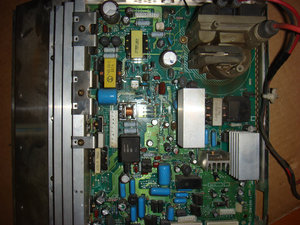NamelessPFG
Gawd
- Joined
- Oct 16, 2016
- Messages
- 893
Makes sense that modern flat-panels would need processors that require active cooling just for the scaler... though you actually have an IBM T221? How well does that thing hold up today?It depends on what's putting out the heat, and what needs cooled.
CRT and plasma displays, it's the display tube or panel itself that's emitting the heat, and there's nothing particularly temperature sensitive in there.
LCDs with fans aren't cooling the panel, they're cooling the scaler electronics. (I've got an IBM T221 which has fans to cool its large, fast FPGAs that are acting as the scaler system.)
It's pretty impressive to realize that they were doing 4K in 2001, with ludicrously high DPI at that owing to its 22.5" size, but that the DVI interface and the graphics cards of the day just weren't up to driving the thing properly. I wonder if the panel would still be worth something if the entire T-CON were to be replaced with a more modern one packing current HDMI and DisplayPort standards that can push 3840x2400 at 60 Hz, or if the existing one can have its FPGAs reprogrammed to similar effect.
![[H]ard|Forum](/styles/hardforum/xenforo/logo_dark.png)


